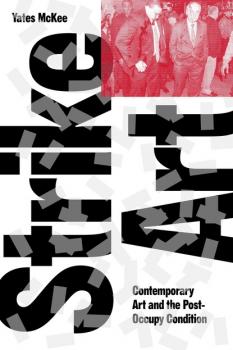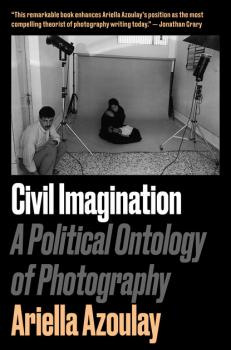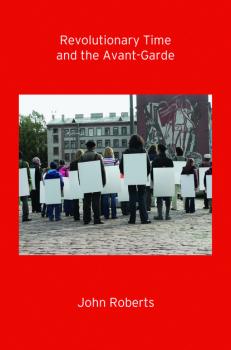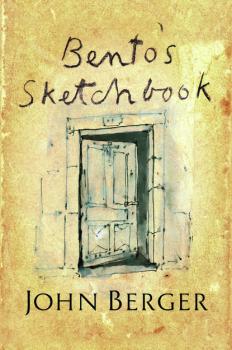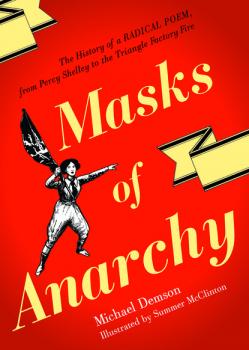ТОП просматриваемых книг сайта:
Изобразительное искусство, фотография
Различные книги в жанре Изобразительное искусство, фотография, доступные для чтения и скачиванияАннотация
The collision of activism and contemporary art, from the Seattle protests to Occupy and beyond What is the relation of art to the practice of radical politics today? Strike Art explores this question through the historical lens of Occupy, an event that had artists at its core. Precarious, indebted, and radicalized, artists redirected their creativity from servicing the artworld into an expanded field of organizing in order to construct of a new—if internally fraught—political imaginary set off against the common enemy of the 1%. In the process, they called the bluff of a contemporary art system torn between ideals of radical critique, on the one hand, and an increasing proximity to Wall Street on the other—oftentimes directly targeting major art institutions themselves as sites of action. Tracking the work of groups including MTL, Not an Alternative, the Illuminator, the Rolling Jubilee, and G.U.L.F, Strike Art shows how Occupy ushered in a new era of artistically-oriented direct action that continues to ramify far beyond the initial act of occupation itself into ongoing struggles surrounding labor, debt, and climate justice, concluding with a consideration of the overlaps between such work and the aesthetic practices of the Black Lives Matter movement. Art after Occupy, McKee suggests, contains great potentials of imagination and action for a renewed left project that are still only beginning to ripen, at once shaking up and taking flight from the art system as we know it.
Аннотация
Transformations in Cuban art, literature and culture in the post-Fidel era Cuba has been in a state of massive transformation over the past decade, with its historic resumption of diplomatic relations with the United States only the latest development. While the political leadership has changed direction, other forces have taken hold. The environment is under threat, and the culture feels the strain of new forms of consumption. Planet/Cuba examines how art and literature have responded to a new moment, one both more globalized and less exceptional; more concerned with local quotidian worries than international alliances; more threatened by the depredations of planetary capitalism and climate change than by the vagaries of the nation’s government. Rachel Price examines a fascinating array of artists and writers who are tracing a new socio-cultural map of the island.
Аннотация
Acclaimed artist Kenneth Goldsmith’s thousand page beautiful homage to New York City Renowned poet and conceptual artist Kenneth Goldsmith collects a massive assortment of quotations about New York City in the twentieth century. This kaleidoscopic montage from hundreds of sources is a literary adoration of New York as the capital of the world, and was inspired by Walter Benjamin’s unfinished masterpiece, The Arcades Project, a compendium of quotations about nineteenth-century Paris. Goldsmith brings together an immense archive of quotations about modern New York from novels, histories, newspapers, memoirs, letters, advertisements and more unlikely sources, all organized into lyrical and philosophical categories. The result is a magisterial and poetic history of New York in the twentieth century, and an extraordinary, one-of-a-kind book of experimental literature.
Аннотация
A major new book from one of the world’s leading writers and art critics John Berger, one of the world’s most celebrated art writers, takes us through centuries of drawing and painting, revealing his lifelong fascination with a diverse cast of artists. In Portraits, Berger grounds the artists in their historical milieu in revolutionary ways, whether enlarging on the prehistoric paintings of the Chauvet caves or Cy Twombly’s linguistic and pictorial play. In penetrating and singular prose, Berger presents entirely new ways of thinking about artists both canonized and obscure, from Rembrandt to Henry Moore, Jackson Pollock to Picasso. Throughout, Berger maintains the essential connection between politics, art and the wider study of culture. The result is an illuminating walk through many centuries of visual culture, from one of the contemporary world’s most incisive critical voices.
Аннотация
The “Copernican Revolution” in studying photography brings to light how images can both reinforce and resist power regimes. Understanding photography is more than a matter of assessing photographs, writes Ariella Azoulay. The photograph is merely one event in a sequence that constitutes photography and which always involves an actual or potential spectator in the relationship between the photographer and the individual portrayed. The shift in focus from product to practice, outlined in Civil Imagination, brings to light the way images can both reinforce and resist the oppressive reality foisted upon the people depicted. Through photography, Civil Imagination seeks out relations of partnership, solidarity, and sharing that come into being at the expense of sovereign powers that threaten to destroy them. Azoulay argues that the “civil” must be distinguished from the “political” as the interest that citizens have in themselves, in others, in their shared forms of coexistence, as well as in the world they create and transform. Azoulay’s book sketches out a new horizon of civil living for citizens as well as subjects denied citizenship—inevitable partners in a reality they are invited to imagine anew and to reconstruct. Beautifully produced with many illustrations, Civil Imagination is a provocative argument for photography as a civic practice capable of reclaiming civil power.
Аннотация
One of the world’s leading art theorists dissects a quarter century of artistic practice Bad New Days examines the evolution of art and criticism in Western Europe and North America over the last twenty-five years, exploring their dynamic relation to the general condition of emergency instilled by neoliberalism and the war on terror. Considering the work of artists such as Thomas Hirschhorn, Tacita Dean, and Isa Genzken, and the writing of thinkers like Jacques Rancière, Bruno Latour, and Giorgio Agamben, Hal Foster shows the ways in which art has anticipated this condition, at times resisting the collapse of the social contract or gesturing toward its repair; at other times burlesquing it. Against the claim that art making has become so heterogeneous as to defy historical analysis, Foster argues that the critic must still articulate a clear account of the contemporary in all its complexity. To that end, he offers several paradigms for the art of recent years, which he terms “abject,” “archival,” “mimetic,” and “precarious.”
Аннотация
Why the avant-garde of art needs to be rehabilitated today Since the decidedly bleak beginning of the twenty-first century, art practice has become increasingly politicized. Yet few have put forward a sustained defence of this development. Revolutionary Time and the Avant-Garde is the first book to look at the legacy of the avant-garde in relation to the deepening crisis of contemporary capitalism. An invigorating revitalization of the Frankfurt School legacy, Roberts’s book defines and validates the avant-garde idea with an erudite acuity, providing a refined conceptual set of tools to engage critically with the most advanced art theorists of our day, such as Hal Foster, Andrew Benjamin, Alain Badiou, Jacques Rancière, Paolo Virno, Claire Bishop, Michael Hardt, and Toni Negri.
Аннотация
A front-line human rights defender fighting murderous impunity in the Mexican borderlands The Mexican border state of Chihuahua and its city Juárez have become notorious the world over as hotbeds of violence. Drug cartel battles and official corruption result in more murders annually in Chihuahua than in wartorn Afghanistan. Thanks to a culture of impunity, 97 percent of the killings in Juárez go unsolved. Despite a climate of fear, a small group of human rights activists, exemplified by the Chihuahua lawyer and organizer Lucha Castro, works to identify the killers and their official enablers. This is the story of La Lucha, illustrated in beautiful and chilling comic book art, rendering in rich detail the stories of families ripped apart by disappearances and murders—especially gender-based violence—and the remarkably brave advocacy, protests, and investigations of ordinary citizens who turned their grief into resistance.
Аннотация
A meditation, in words and images, on the practice of drawing, by the author of Ways of Seeing. The seventeenth-century philosopher Baruch Spinoza—also known as Benedict or Bento de Spinoza—spent the most intense years of his short life writing. He also carried with him a sketchbook. After his sudden death, his friends rescued letters, manuscripts, notes—but no drawings. For years, without knowing what its pages might hold, John Berger has imagined finding Bento’s sketchbook, wanting to see the drawings alongside his surviving words. When one day a friend gave him a beautiful virgin sketchbook, Berger said, “This is Bento’s!” and he began to draw, taking his inspiration from the philosopher’s vision. In this illustrated color book John Berger uses the imaginative space he creates to explore the process of drawing, politics, storytelling and Spinoza’s life and times.
Аннотация
A graphic history of a poem that became an inspiration to immigrant workers in New York Masks of Anarchy tells the extraordinary story of Percy Shelley’s poem “The Masque of Anarchy,” from its conception in Italy and suppression in England to the moment it became a catalyst for protest among New York City workers a century later.Shelley penned the poem in 1819, after hearing of the Peterloo Massacre, where British cavalry charged peaceful political demonstrators near Manchester. His words would later inspire figures as wide-ranging as Henry David Thoreau and Mahatma Gandhi—and also Pauline Newman, the woman the New York Times called the “New Joan of Arc” in 1907. Newman was a Jewish immigrant who worked in the Triangle Shirtwaist Factory, and came to be a leading organizer—and the first female organizer—of one of America’s most powerful unions, the International Ladies’ Garment Workers’ Union. As she marched with tens, sometimes hundreds of thousands of New Yorkers in the streets, Shelley’s poem never ceased to inspire her. “Shake your chains to earth like dew,” it implores. “Ye are many—they are few.”

